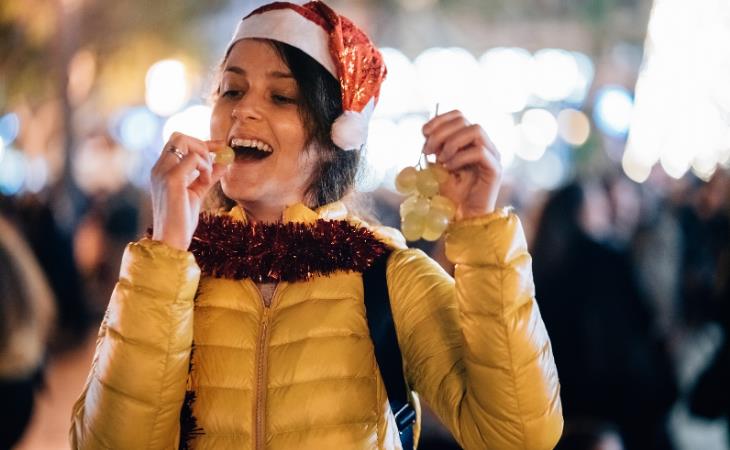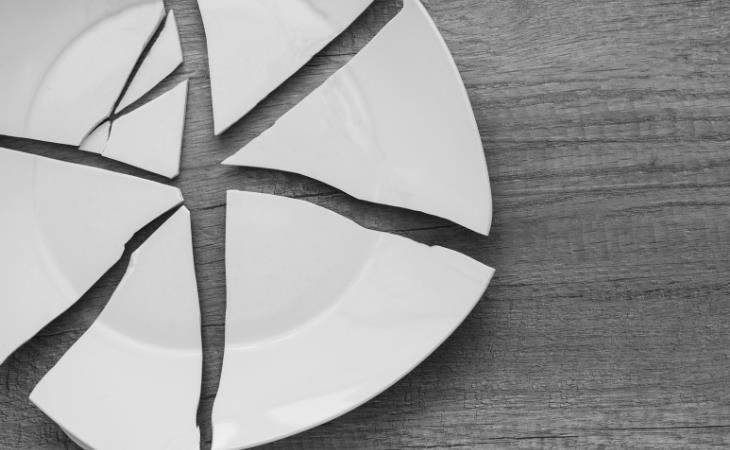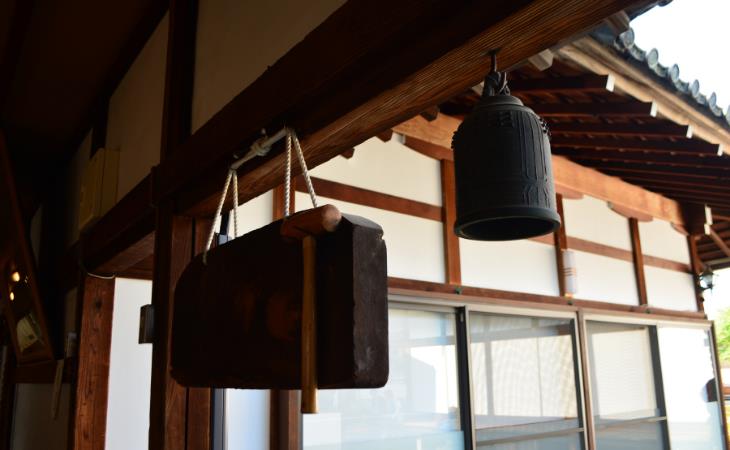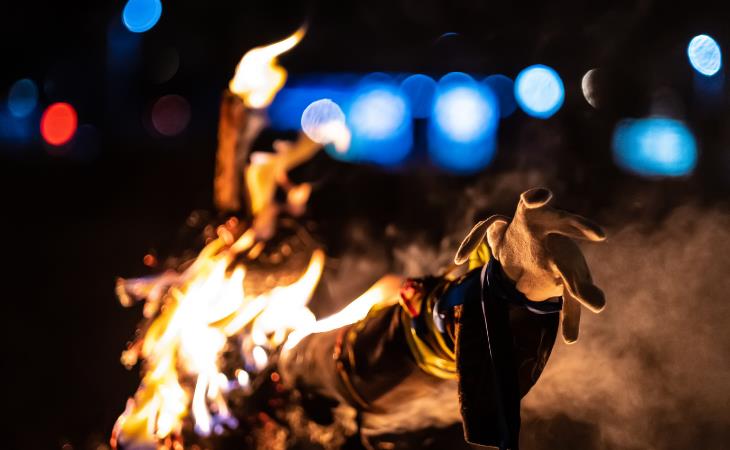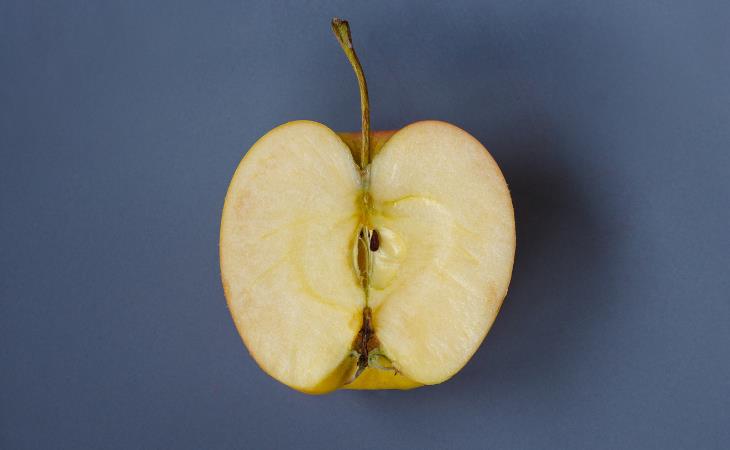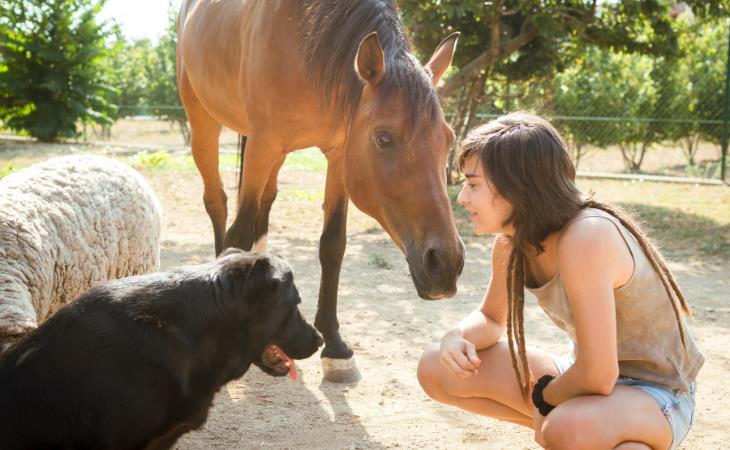In Spain, locals take part in a cherished tradition on New Year's Eve: gobbling precisely 12 grapes at midnight. This custom, which dates back to the late 1800s, was cleverly planned by vine producers in Alicante to promote grape sales near the end of the year. The practice became popular among Spaniards, who eat one grape for each of the first 12 bell chimes after midnight in the hopes of warding off bad luck and welcoming a prosperous year.
2. Denmark: Smashing plates
Locals in Denmark express their good wishes for the next year by smashing plates and crockery against their neighbors' doors. Unused plates are collected throughout the year and cheerfully thrown at the front doors of friends and relatives on December 31st. A higher pile of broken china is thought to represent more friends and increased good fortune in the next year. Furthermore, Danes celebrate New Year's Eve with a traditional supper of boiled fish with mustard, followed by kransekage and marzipan doughnuts.
3. Japan: 108 bell chimes
Japanese New Year, or Oshogatsu, commences with a significant midnight ceremony. At this momentous hour, 108 bells echo in unison, symbolizing the eradication of 108 universal human vices. This age-old ritual is largely rooted in the Japanese idea that the reverberating tolls act as a cleansing agent, washing people of the sins collected in the previous year. On the eve of the New Year, the bell is rung 107 times, with the 108th toll signaling the auspicious beginning of a new year.
4. Greece: Hanging onions
In Greek tradition, onions are revered as symbols of rebirth, and to foster growth in the new year, they are commonly hung on doors throughout the country on December 31. Associated with the essence of development, this pungent vegetable has a deeply ingrained place in Greek culture, expressing a relentless drive to establish roots and thrive.
5. Germany: Pouring lead
Germany takes an odd approach to New Year's Eve celebrations with the tradition of Blei Gießen, or the pouring of lead. Using a candle flame, people melt small portions of lead or tin, pouring the molten metal into chilled water. The resulting shape is believed to offer a glimpse into a person's destiny for the approaching year, similar to the ancient art of tasseography.
6. Ecuador: Burning scarecrows
Ecuador's New Year's Eve festivities are set ablaze with bonfires. An essential part of each bonfire is an effigy representing a politician, a pop culture icon, or any other notable individual from the previous year. Dubbed the "año viejo," or "old year," these effigy burnings serve as an annual cleansing ritual, symbolically purifying the world of the negative remnants of the past 12 months and creating a clean slate for the positive to unfold.
7. Czech Republic: Cutting apples
The Czech New Year's Eve celebration is marked by a peculiar tradition involving apples and fortune-telling. The Czechs slice an apple in half on the eve of the new year, interpreting its shape to predict the fate of those present. For example, a core resembling a star promises future meetings filled with happiness and vitality. Meanwhile, a cross-shaped core suggests that someone at the New Year's Eve party may fall ill.
8. Colombia: Put three potatoes under the bed
Colombians place three potatoes under their beds on the eve of the New Year: one peeled, one unpeeled, and one partially peeled. The potato they retrieve at the stroke of midnight sets the tone for their financial prospects in the coming year. A peeled potato indicates possible problems with money, an unpeeled potato foreshadows a lucrative year, and a half-peeled potato implies a happy medium between the two.
9. Italy: Wearing red underpants
Italians maintain a tradition of wearing red underwear on New Year's Eve. The color red is associated with fertility in Italian culture, and people wear it secretly beneath their clothes in the hope that it will increase their chances of conceiving in the coming year.
10. Romania: Talking to animals
Romania has a unique tradition based on ancient agrarian beliefs that animals only acquire the ability to speak on New Year's Day. Farmers are often spotted conversing with their animals and surreptitiously whispering good wishes into their ears on the 31st of December. Interestingly, the superstition states that deciphering the animals' responses will bring ill fortune, while remaining oblivious will bring prosperity.

